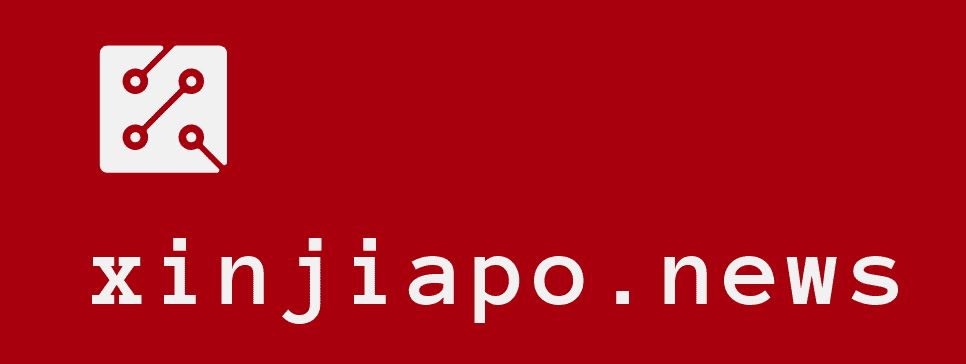李国权教授在2018新加坡经济学会年会上的讲话


转自:美篇 文 | 闫黎老师
李国权教授在2018新加坡经济学会年会上的讲话
(English version -- 英文版)
The future of business is a difficult topic. First, I do not have a crystal ball! Secondly, I cannot even see what is going to happen next year in this digital age, let alone a long-range prediction of business in five to ten years’ time. Yes, a year is a distant future in technology time. Being humbled by all the accelerated developments that I have seen in the fintech and blockchain community since 2009, the year that Satoshi Nakamoto mined the first bitcoin, it is better for me to paint a future scenario that the community wishes to see rather than pretending that I have a good sense where business is heading. I am going to use three stories to describe how businesses have changed over the last few time compressed years.

First, let me start with 2015 when I was at Stanford University as a visiting scholar. On paper, my four months Fulbright mission was to harness scalable technology to serve the needy. In actual fact, I was out there looking for Satoshi Nakamoto. One of my most memorable visits was to Premise, a big data company. They called themselves Ground Truth Platform – to get the truth on the ground! The company has among its investors Standard Chartered Bank and one of its main tasks was to gather data from different markets including the remote villages. With locals collecting price data from the wet markets using handphones, photos and GPS, they were able to construct real-time CPI data.
The local contributors get paid for collecting data on a daily basis by using a downloaded app. In case you wonder what these real-time data were for. They are very valuable. These data are collected for the investors in the financial sector who seek to have first-hand information before others and before the official statistics are announced. Profits are made when you have information ahead of other traders or investors. Financial institutions also employed their service to collect local data and use AI mapping to understand where ATMs should be placed to have maximum traffic. Some governments also use the data to track diseases with citizen-led disease risk mapping and vector monitoring platform. This crowd-sourced data collection business model creates new GIG-economy jobs, employing a lot of local part-timers with handphones and those able to get on a bike to take photos. That was the first time I realised the power of AI and digital real-time data. Despite hiring independent contractors and freelancers, this business model still suffers from a high marginal cost of scaling! Nevertheless, it was undoubtedly one of the most innovative companies that I visited, and I was impressed because as an econometrician that used to work with monthly CPI data and an ex-hedge fund manager that worked with time-series transaction data, I knew how powerful this was. Seeing Google autonomous vehicle on the road in Mountain View and in the Computer History Museum, using Airbnb on a regular basis, visited robo advisor and digital bank, I immediately realised that the world of business has changed.

In 2016, I was invited by their Chief Strategist Prof Chen Long to visit Ant Financial in Hangzhou. I toured and had a briefing of their technology and AI capabilities. What surprised me was the control room with all the real-time data flashing knowing where the frauds were taking place, where the bottlenecks were online, where the hackers were in action, where the last transactions had taken place, and everything else online that was happening! We were all familiar with economies of scale in Economics 101. However, few understand the power of economies of scope. The economies of scale created by then 400m sticky customers, and the economies of scope of providing not only payment services, but microinsurance of 50 cents RMB, wealth management, bills payments, taxi-hailing, transport needs, e-commerce, movie tickets booking and many other activities. But what impressed me was the power of commercialisation and the mastery of the concept of economies of scope. By adding on a lot of other services to the sticky customers, they were able to function as an Internet business with low-profit margin, asset-light, scalability, innovative and easily complied with regulation or the lack of it. Grab is another similar model that spills over to retail, logistic, commerce and perhaps manufacturing in the future with localised 3D and 4D printing. Yet, facing difficulties in crossing borders, these type of businesses may not be of comfort to Government who cannot afford a single point of attack or failure. It suffers from the high risk of inability to expand offshore with low cost, cybersecurity attack, and political resistance.
That brings me to the third stories of learning the BASIC or ABCD. The Chinese Internet Plus model relies on BASIC or ABCD. But I am going to extend their acronyms by adding E, that is ABCDE. The Future of Business for Singapore in ASEAN because of the proximity and unsatiated demand.
A: AI and AR/VR,
B: Blockchain and Smart Contract,
C: Cloud and Cyber Security,
D: Drone and Data Analytic, and
E: Environmentally and Sustainable Tech

Back to my Fulbright mission in Stanford which is to harness technology to serve the needy. This is the “Desired” future for business in my view as all these technologies are available and the ASEAN market is ready for cheap capital, technology literacy, connectivity inclusion, regulatory changes, digital identity, and mindset. Convergence of Technology leads to convergence of social and profit objectives. This has never happened before. Hopefully, we can then extract ourselves from the habit of growth by leverage (using complex financial instruments including commodity, real estate, infrastructure that damages the environment) to growth by inclusion using new and green technologies. The risk is in underestimating the importance of the governance (rather than law as we are dealing with smart contracts and may not have a central party) of technology, especially on AI and blockchain. The other risk is underestimating the importance of the distribution of both e-trust and wealth as these are key stabilisers of a well organised virtual economy and society. New business models with new customers must emerge to counter the loss of jobs in this disruptive transformation. One other risk is that economies decide not to pursue open policy especially open source for both software and hardware in the virtual space that has severe cybersecurity issue. The highest risk is not recognising that 73pc of ASEAN are excluded from the formal financial system and take full advantage of this group of high MPC customers with appropriate technology.
The First Industrial Revolution had water and steam power to mechanise production, with electricity in the Second to create the mass production. The Third used electronics and information technology (IT) to automate production. Building on the Third, a Fourth Industrial Revolution is the digital revolution since the middle of the 20th century with a fusion of technologies, blurring the lines between the physical, digital and biological spheres. The worst case scenario is a single authority such as AI controls all the data and technology and rather we human. It is therefore my hope that blockchain will be the driver for the Fourth Industrial Revolution because privacy protection with cryptography and cybersecurity are essential when the convergence of technology happens.
With blockchain, the future business world is a tokenised world that incentivises collaboration among untrusted parties, enables point-to-point instant cross-border digital data and value transfer, fractionalises and heterogenises ownership of everything of value, and enhances inclusion in many aspects. All these activities may happen in the mode of Machine to Machine, Robot to Robot, and Peer-to-Peer. It may be a world that every machine, robot, or human is a bank, everyone and everything is an exchange, and everyone and everything is in charge of its assets and makes individual decisions. If we are without the wisdom to protect our own human independent decisions and our environment, we may destroy the entire human race. You may think that I am thinking too far ahead and you may be right. Since this is an opportunity to talk to a full house here, I would rather sound silly than to miss the opportunity to make an impression on you. But I am optimistic that we will soon realise how valuable the blockchain is as it gives privacy protection and cybersecurity. A future driven by inefficient distributed ledger such as blockchain, also increases the cost of hacking, and may just be the kind of future of business that we desire! Inefficiency may not be bad for an Open Hinternet as it is more sustainable than a closed and centralised Internet.

Perhaps the future is less about private and investment banking, more about financial inclusion. Less about merger and acquisition, and more about token swap. Less about hard infrastructure building, more about renewable energy and green technology. Less about real estate, more about low-cost modular housing. Less about building roads, more about drone and airdrop. “Less About Deep Technologies without New Business Models, More About Open Technologies that Create Jobs!”
Final comment is that technologies are driving the industrial revolution but they are mostly neutral. The future of business is what we made of it. We have to use the technologies wisely to ensure that there is a bright future for business.
























评论